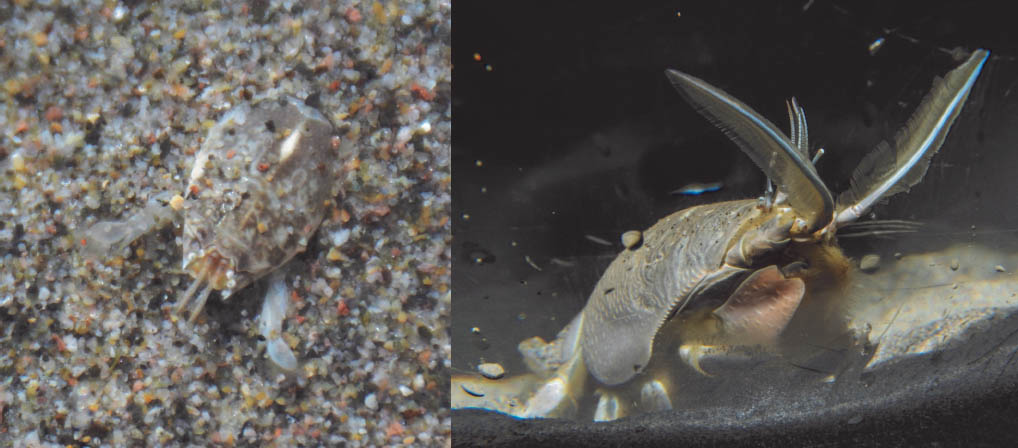

|
1 |
2 |
|
|
PAGES |
||
|
Closely related to the horseshoe crab the mole crab is not a "true crab". They can be quite abundant in the ‘swash zone’ of open, sandy beaches (the swash zone is the on-shore area covered by water as the ocean’s waves wash in and recede). Because the swash zone changes with every tide, the location of the mole crabs does as well: they skitter closer into shore and further out from shore as the tides rise and fall. Mole crabs spend most of their time buried in the sand, leaving only their eyes poking out to observe their surroundings. They have two pairs of modified antennae, the first of which reaches above the sand and is used for respiration (like snorkels!). The second pair of antennae resemble feathers. They are much longer than the first pair and are used to catch food for the mole crab. They are extended and waved through the water to collect plankton, then are drawn into the crab’s mouth. Mole crabs play a vital part in the food chain: they feed on plankton and in turn are eaten by birds, fish and larger crabs. They provide the link or bridge between the very small organisms and the much larger creatures! |
 |
|
1 |
2 |
|
|
PAGES |
||
| ||||
| ||||